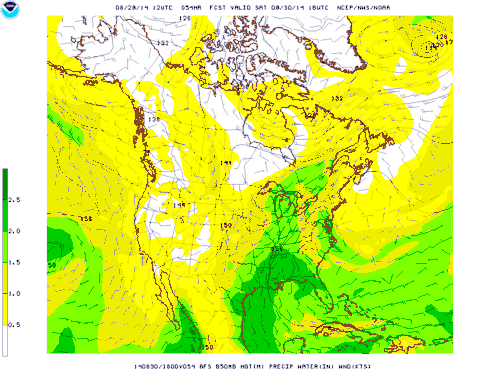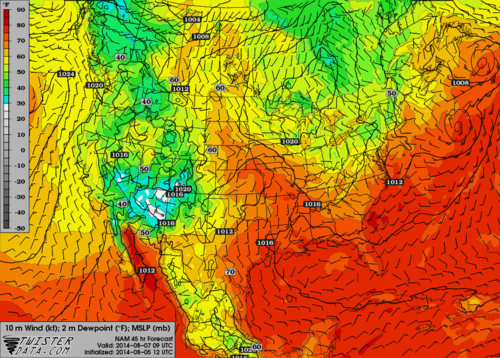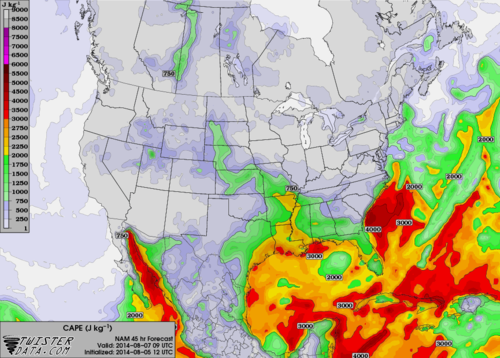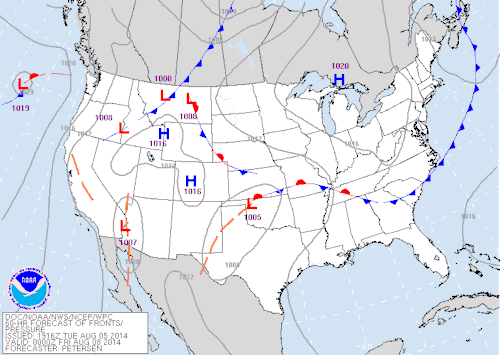A question we have been asked a lot recently is what our unseasonably cool July might mean for the upcoming winter. We decided to look at the top 5 coldest Julys in Memphis and each of the following winters to see if there is any connection between cool summers and the following winter. For the sake of this blog, we will examine the total snowfall from November to March and the month with the coldest average temperature. We will also look at how a developing El Nino could play into our forthcoming winter season of 2014-'15.
To establish a baseline, the average monthly temperature for July is 82.7° and the coldest winter month is January with an average temperature of 41.2°. Seasonal snowfall averages 3.8". Temperature records date back 140 years and snowfall records are spotty before 1889.
 |
| 2 of the top 3 snowiest winters occurred following a top 4 cool July! |
The Top 6
1. 1891 was the coldest July in Memphis history with an average temperature of 77.0° which was followed by a winter in which the coldest month (January) had an average temperature of 36.0° (about 5 degeres below normal) and a seasonal snowfall total of 24”. That year’s snowfall is made up mostly of the largest snowstorm in Memphis history when 18.5” of snow fell in a single storm on March 16th-17th of 1892. Early in March it appeared that winter had come to an end with temperatures climbing into the 60s and low 70s before a strong mid month cold front dropped temps, which was followed a few days later by the historic snowfall.
2. Next on the list comes 1906 with an average July temp of 77.2° followed by a rather mild winter in which our coldest temps came in February of 1907 as average temps fell to 45.2°. That winter only saw 0.7” of snowfall, well below the current normal seasonal snowfall of about 4”.
3. In 1882, Memphis had an average July temp of 77.6° and the coldest winter month (January) saw an average temp of 39.3°. That winter no snowfall was reported, however due to it being pre-1890, snowfall records are very intermittent and therefore it is possible Memphis saw minor accumulations that were never recorded. The data is simply inconclusive.
4. July 1967 is 4th on our list of coldest in Memphis at 77.7° and was followed by a winter dominated by below normal temperatures with the coldest temps coming in February at 37.2°. Total snowfall for the winter of '67-'68 was 23.8”, or 3rd on the list of snowiest winters. Most of the snow fell in the month of March with the second biggest snowstorm in Memphis history. A total of 17.3” fell over three days. The storm got started with 8.7” falling on March 21st before another 7.4” fell on the 22nd and 1.2” fell on the 23rd, bringing the storm to an end.
5. July 1905 had an average temp of 77.9° to come in as the 5th coldest in Memphis recorded history. Average temps for the winter never fell out of the 40s with the coldest month once again coming in February at 41.7°. Snowfall for the 1905-1906 winter season was below normal with exactly 1” spread across December, January, and February.
6. As you might know from reading our posts, July 2014 was the 6th coolest July on record. So the question remains: can we draw any conclusions from Memphis past to suggest what could occur this winter season? Interestingly the top 2 winter storms in our history have followed one of the coolest Julys on record and 2 of the top 3 snowiest winters also followed top 4 cool Julys and the snowiest winter on record (1917-1918) followed a July that was just outside the top 10% of coolest Julys (#17 out of 140 years). But we have also had two years with well below average snowfall and one unknown due to a lack of reliable records. Much like snowfall totals, winter temperatures also seem to be split, featuring two below average seasons, two above average, and one with temps near normal.
 |
| The typical winter weather pattern in an El Nino year features a southerly storm track with cool and wet conditions, especially across the southern U.S. All El Ninos are different however. |
Influence of El Nino
So what other factors could have an influence on our overall winter pattern? Though it appears it may not be as strong as previously thought, an El Nino is developing, which typically leads to cooler temps and wetter conditions for the southeast U.S. During an El Nino year, low pressure systems typically track along the southern U.S., often south of the metro near the gulf coast, allowing colder air to move into areas north of the system as moisture is pulled northward, overriding the cold air. As is always the case for us, the exact track of each individual storm decides who is dry and cold, who gets a cool rain, and who sees other types of "fun" precipitation (I expect you may be reading that sentence many times this winter). While there are a few interesting correlations, it appears we cannot draw any real conclusions from our past on what we'll experience this winter. One thing you can be sure of is MWN will be here keeping you updated about it across our social media platforms and of course in detail here on the blog!
Patrick Luckett, MWN Social Media Intern
----
Follow MWN on
Facebook,
Twitter, and
Google+
Visit
MemphisWeather.net on the web or
m.memphisweather.net on your mobile phone.
Download our
iPhone or Android apps, featuring
StormWatch+ severe weather alerts!
Icicle photo credit: Suat Eman, FreeDigitalPhotos.net

























